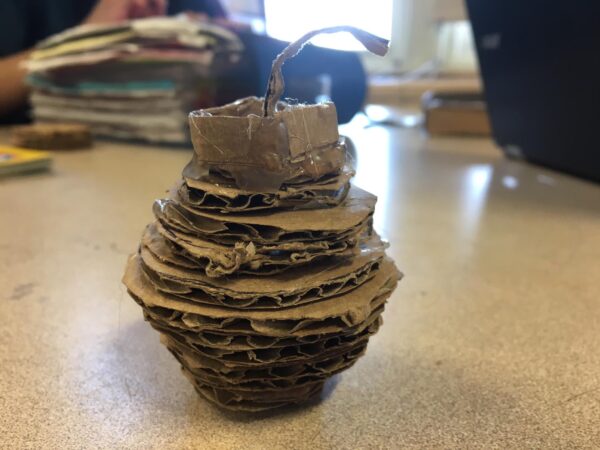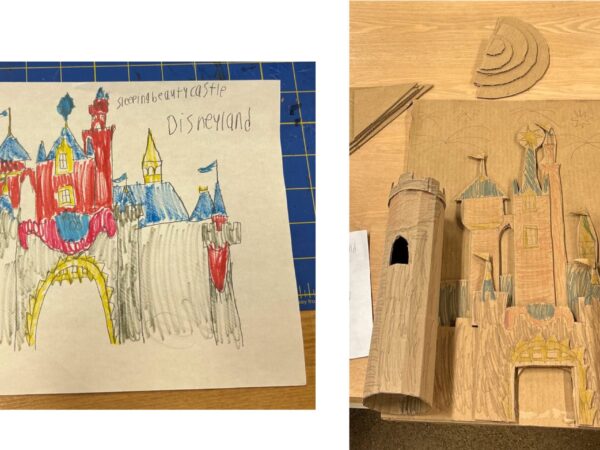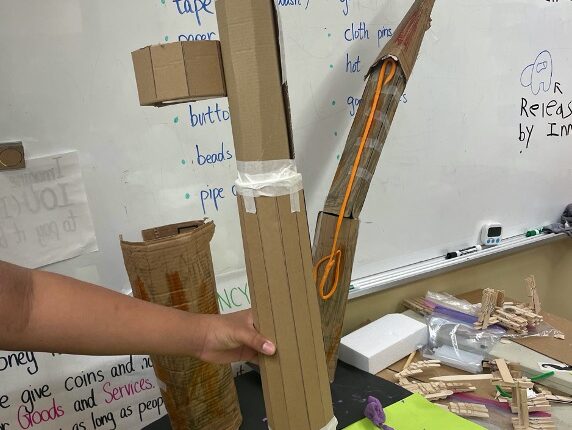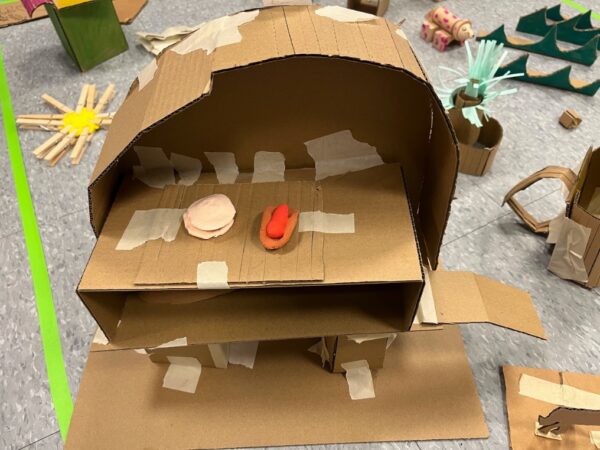STUDENT WORK


Cardboard
Learning how to manipulate cardboard, especially scoring, goes a long way, giving makers the power to create strong shapes with clean lines. And cardboard is one of those workhorse materials that is in abundant supply, ready for collection and does not require spending a penny. Put out a call for cardboard donations to families or colleagues and before you know it, you’ll have a huge supply of cereal, shoe, and pasta boxes. Take a walk to your community’s recycling bins and you can likely score some great BIG boxes. Even hitting a local grocery store or shop and asking for discarded shipping boxes can maintain maker club stock.

What makes some pieces of cardboard stronger than other pieces? Notice the fluting, those wavy middle layers (fluting) between the flat pieces of cardboard (linerboard). The size and strength of the fluting reinforces the material’s overall strength. And the more layers of cardboard, the strong the object!

This maker’s love of Sleeping Beauty’s Castle in Disneyland was the context for employing newly acquired cardboard cutting skills. And the maker’s use of layering and including both flat and round pieces creates beautiful dimension that makes this piece stand out.

Skyscraper anyone? The scored base of this structure was a starting point for this maker’s vision. Adding circular counterbalances on opposite sides of the structure was a way to continue experimenting and iterating on an architectural idea.

A “monster barbecue”, complete with items on the grill, was built to feed the scores of visitors that came to a magical zoo world.

This beautiful peacock, made simply by scoring a semi-circle of cardboard and gluing it against the outline of the bird, impressed us all. Seeing this creature reminded us that scoring can be used to create gentle, subtle curves.








